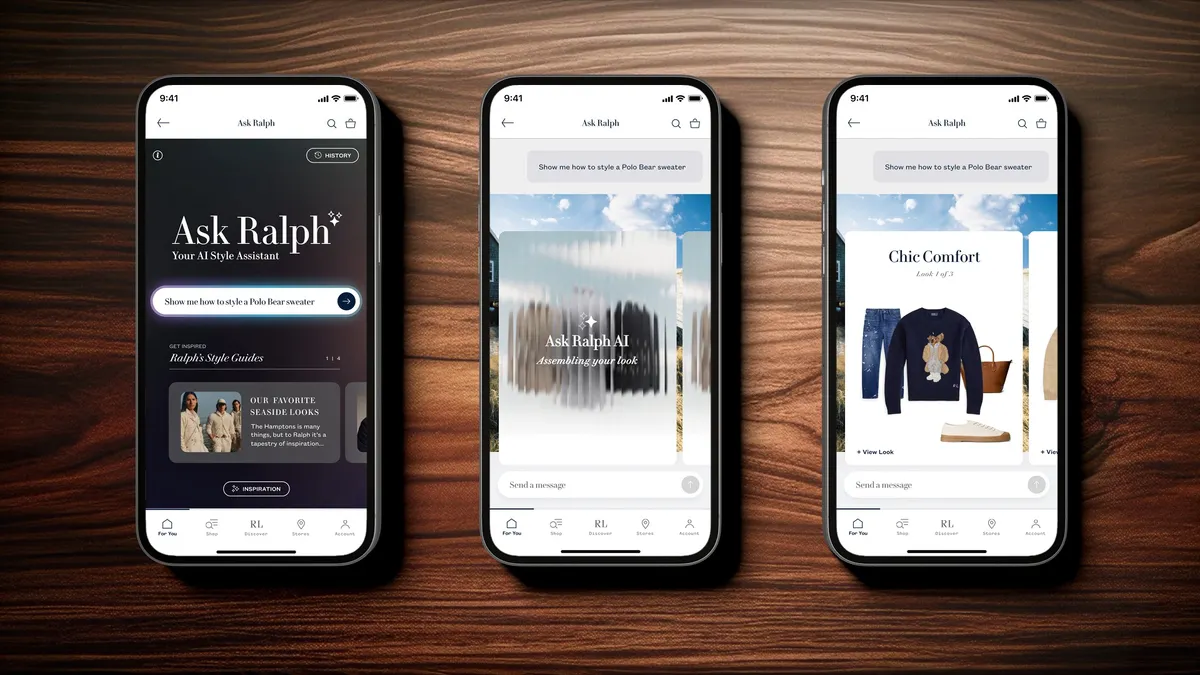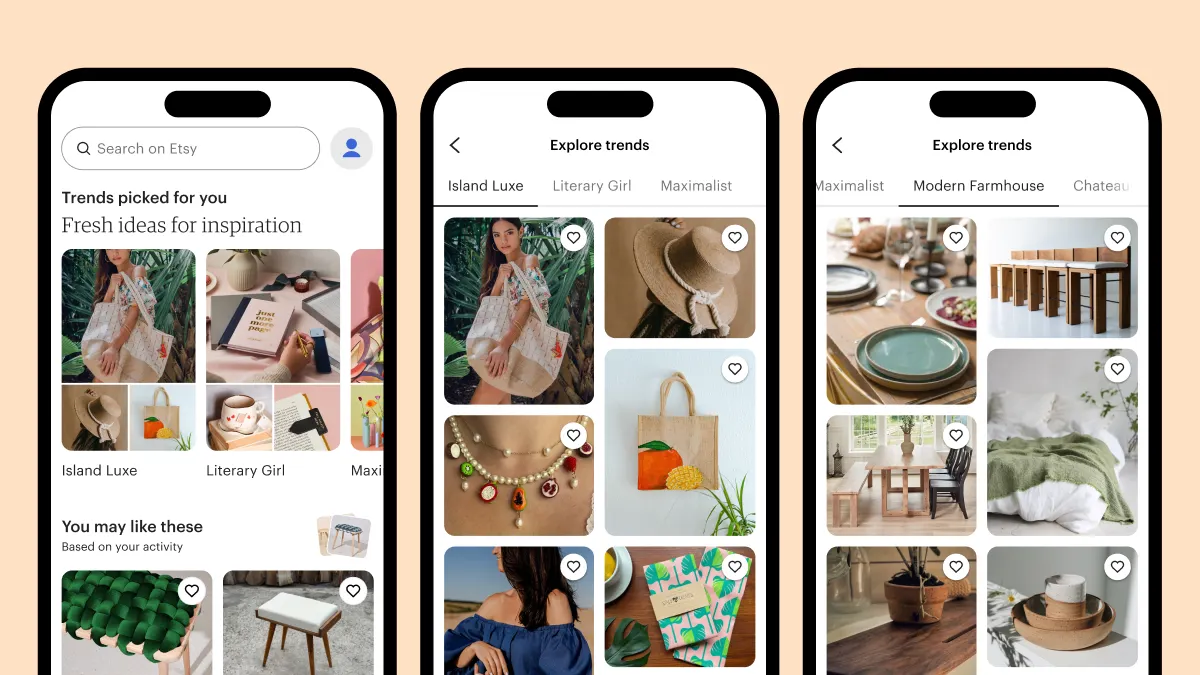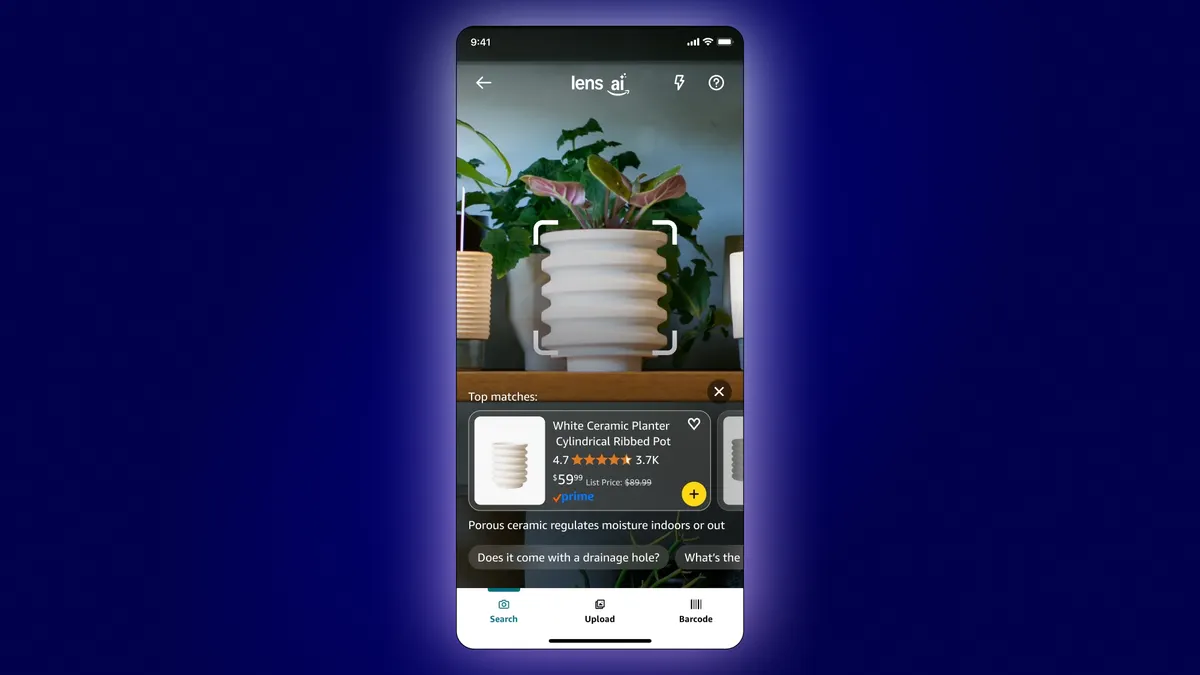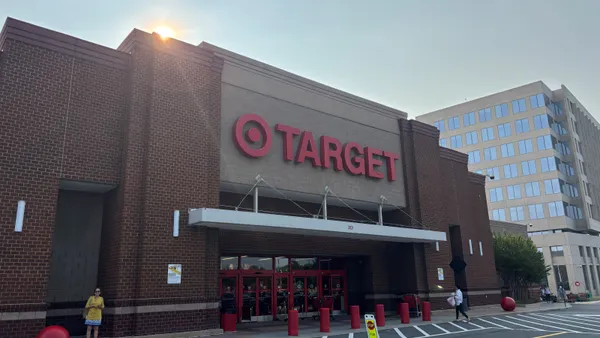Poshmark lives in a space between the slowly rising social commerce trend and the already-risen world of online marketplaces. The sellers-and-buyers platform operates primarily over mobile, and the company prides itself on a social shopping experience, where "seller stylists" and their customers form close personal relationships, and a sense of discovery reigns supreme.
Founded in 2011 with a focus on women's fashion, which has since expanded to men's and kids categories as well, the company officially reached the $1 billion mark earlier this year — and there's no plan of stopping anytime soon, according to CEO Manish Chandra.
"Our goal was to really create a fairly large-scale fashion platform. The vision is to still create the largest fashion platform, but powered by people. So where anybody can really come and buy and sell fashion, and in a way democratize style and fashion across the community," Chandra told Retail Dive in an interview. "I feel like we're still in the beginning stages of that journey, and we've hit the billion-dollar milestone, which is great, but in the grand scheme of fashion that's really a drop in the bucket."
Chandra's goal is lofty one for any company — but apparel is a particularly crowded space and with competing marketplaces like Amazon getting in on the action there are ever-more locations for shoppers looking to avoid the hustle and bustle of the local mall. The question for Poshmark is whether the benefits of a social shopping marketplace can outweigh the competition, and for how long.
Hide-and-seek retail
Shopping on Poshmark is meant to feel something like scrolling through an Instagram feed of friends with clothes that you really want to buy — and a large part of that feeling relies on the thrill of discovery. The company recently launched organizational tabs called "Posh Markets" to help tame the flood-like amount of content available on the app (14 million items per day, according to Chandra), and further its value proposition of giving customers curated picks for their wardrobe.
But the success of Poshmark's app is also tied to larger trends in the retail industry, according to Steve White, vice president, west retail lead and commerce strategist at Publicis.Sapient — namely, the off-price sector, which has seen enviable success in recent years.
"[W]hen you look at retailer chains you see Nordstrom Rack and you see Off-Fifth and some of those stores really driving the revenue for their parent companies. This app kind of plays right into that."

Steve White
Vice President, West Retail Lead, Commerce Strategist at Publicis.Sapient
"Look at the retailer stocks who are doing the best — you're talking about T.J. Maxx [and] when you look at retailer chains you see Nordstrom Rack and you see Off-Fifth and some of those stores really driving the revenue for their parent companies," White told Retail Dive in an interview, noting the treasure hunt mentality of those shoppers. "This app kind of plays right into that."
Chandra believes the millions of products passing through Poshmark every day are part of what makes the treasure hunt atmosphere successful, as well as the curated "Posh Parties," timed events, that highlight different themes and allow customers to shop based on floral prints or other focused categories.
While customers have to pay for shipping — a flat fee of $6.49 — they can otherwise negotiate price with the seller and don't have to pay for it until the item arrives in person and they "accept" it. All-in-all, these digital experience elements are meant to mirror an almost mom-and-pop shop feel, with sellers giving customers personal attention and building communities around similar tastes, helped along by the Posh Parties, which Chandra describes as, "tupperware meets Facebook Live meets a Gilt flash sale altogether."
"That experience has sort of disappeared from the physical world," Chandra said of salespeople having personal relationships with their customers. "The big-box retailers have not been able to simulate that experience and it certainly doesn't happen on big sites like Amazon and eBay. So what we've done is brought that back at scale."
"Word of mouth has always been the most powerful [acquisition strategy] if there were just unified units of marketing."

Reid Genauer
CMO of Magisto
The company's emphasis on personal relationships and building communities also means that the marketplace relies a good deal on word-of-mouth to acquire new customers. That's made somewhat easier thanks to social media, but it's still an inconsistent strategy for customer acquisition, according to Reid Genauer, CMO of Magisto.
"Word of mouth has always been the most powerful [acquisition strategy] if there were just unified units of marketing," Genauer told Retail Dive in an interview. "One unit of word of mouth has always been stronger than a review in publication, has always been stronger than one unit of advertising because of the quality of that impression ... In the past, word of mouth just wasn't scalable and it was perishable."
Poshmark's customer loyalty, though, and the fact that the company operates only in fashion, could be a boon for the marketplace in terms of both differentiation and scale.
Skating to the puck
If there's one thing Chandra likes to brag about, it's how well Poshmark matches up with social media networks. Per his metrics, Poshmark's average active users are on the app for 20 to 25 minutes a day and open the app between seven and nine times a day — numbers that aren't far from "some of the top social platforms."
Unsurprisingly, then, many of Poshmark's sales come from repeat shoppers (upward of 75%, according to Chandra). That's also part of what helps the platform foster personal relationships — the more shoppers come back to the platform, the more likely they are to interact with the same sellers, which in turn should lead to more purchasing — or so the logic goes. But Chandra says it's more than just friendships that keep customers coming back to Poshmark's platform.
"Apparel is plagued by size, fit, material issues — and those issues don't seem to plague Poshmark."

Manish Chandra
CEO of Poshmark
"Apparel is plagued by size, fit, material issues — and those issues don't seem to plague Poshmark," Chandra said. "Largely it's because people can communicate. It's hard if you go to a retailer's website, or sometimes even a large retailer's physical store — you have no one to really ask a simple question of. That simple question can save you both time and hassle and get you something that you want. On Poshmark, people are constantly talking to each other and getting those questions answered."
The company's focus on communication, as well as building up communities, could also be doing more to bolster the marketplace than if it put more emphasis on growing transactions, Jon Reily, vice president and fellow in commerce strategy at Publicis.Sapient, told Retail Dive in an interview. Nevertheless, fostering a sense of community in an online format has its difficulties, especially with older generations, which have more disposable income than young consumers but are less comfortable interacting with brands through technology.
"We've found numerous other brands, and frankly numerous other channels, trying to duplicate that real-world experience in the virtual world to limited success," Reily said. "Now we're tipping the point where we're talking about the tailend of the millennials and the beginnings of Gen Zs, where their entire community has been on their phones in a social situation, so perhaps [Poshmark] will find some measure of success there because they're skating to the puck."
"You want to find markets that are adjacent, where that network effect builds on itself and you're not dropping five rocks into five different ponds. You want the pond to be the same."

Reid Genauer
CMO of Magisto
The marketplace has already undergone several iterations, either to make the app easier to shop or to make sellers more accessible to their client base. Being able to work with particular seller stylists, for example, was a direct result of what Chandra calls users "effectively hack[ing] our platform."
While that's provided a path for growth at the marketplace so far — it's adding 100,000 sellers per month — the path forward is fraught with difficulties, from overexpansion to superficiality and an imperative to avoid becoming a "flavor of the month" for shoppers, per Reily.
Avoiding the Etsy trajectory
Much like department stores' over-expanding store footprints, one of the main obstacles for Poshmark going forward is growing too much. Arguably the goal of any business is to grow, but in the case of Poshmark — which operates as a social marketplace in a particular sector (fashion) — the temptation to scale into different categories, and develop sellers into their own multi-million dollar businesses, presents some risk.
Currently, the company's Posh Markets cover: women's, men's, kids, plus, boutique and luxury, but Chandra plans more on the horizon, including possibly the home category. If expansion is done carefully and slowly, the company could come out on top, but moving into new categories can cause problems for platforms that are built on word of mouth, retail experts said.
"One of the ways that tribes grow — not Poshmark, but their clients — is through a network effect," Genauer said. "People who are interested in fashion tend to socialize more with other people who are into fashion than people that are into home electronics. You want to find markets that are adjacent, where that network effect builds on itself and you're not dropping five rocks into five different ponds. You want the pond to be the same."
Apart from finding the right markets to target, scaling also has the potential to shatter Poshmark's authentic, homegrown, image. If sellers start turning into billion-dollar businesses, the marketplace could lose those personal relationships it claims to bring to retail. More than authentic relationships, though, the quality of the products could also go downhill.
"[A]ll of a sudden it moves beyond a 'we're exchanging used clothing that we like' to 'I'm manufacturing things in China and I'm selling it here.' That's kind of what happened to Etsy and I kind of fear that's what might happen here."

Jon Reily
Vice President and Fellow, Commerce Strategy, Publicis.Sapient
"When these businesses that start out here start to become successful, there will be an enormous sort of temptation to move into, 'oh well I want to become my own brand,'" Reily said. "And then all of a sudden it moves beyond a 'we're exchanging used clothing that we like' to 'I'm manufacturing things in China and I'm selling it here.' That's kind of what happened to Etsy and I kind of fear that's what might happen here."
Chandra, of course, is optimistic about the growth of the company. According to him, 1 in 30 women in the U.S. are on Poshmark, and after launching men's, 1 in 5 customers joining the site are male. Not all of the app's frequenters are millennials, either, and he's hoping to reach a breadth of different shoppers with "a social mall for the Instagram generation."
Right now, the app's main growth efforts are focused on international expansion and growing the existing communities, which means making changes to the seller stylist platforms and also partnering with social media sites like Pinterest to disseminate seller content to a wider audience. That's also led to developments on the backend — some of which the company is still grappling with.
"As the platform becomes bigger, many times finding those products and discovering them becomes a challenge," Chandra said. "So a lot of this shifting happens with: How do you connect the right people? How do you highlight, curate different products on the platform? And that's been a lot of technical push for us in terms of where we are going in scaling the communities."
The struggle for Poshmark could be finding the balance between healthy growth and so much growth that they get thrown into the ever-increasing bucket of Etsy, eBay, Amazon and Alibaba. The growth path that the company chooses — whether it be celebrity partnerships or new categories — will define both how it's seen and where the company goes.
"Let's say they do a partnership with Goop and they get Gwyneth Paltrow on there to start selling some stuff — that brings them thousands, maybe millions, of customers," White said of potential expansions. "But does it ruin the authenticity of the site? Or if they just stay niche and small, what does that do for them? ... My guess is eventually a retailer's going to buy them … and if so, is that the end of the road?"





















